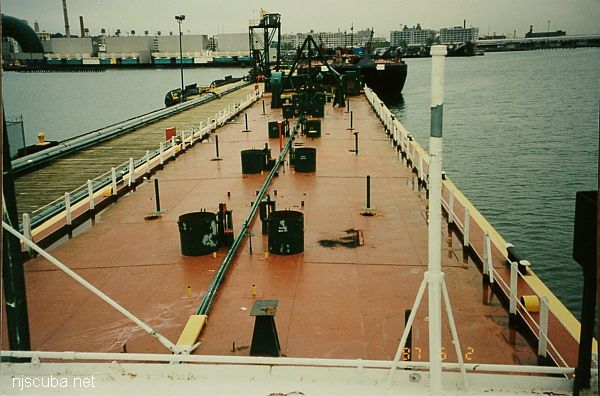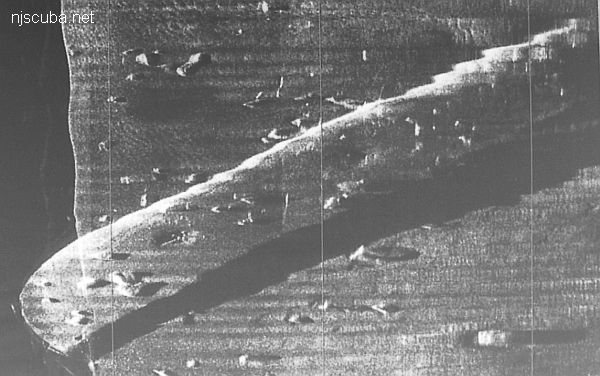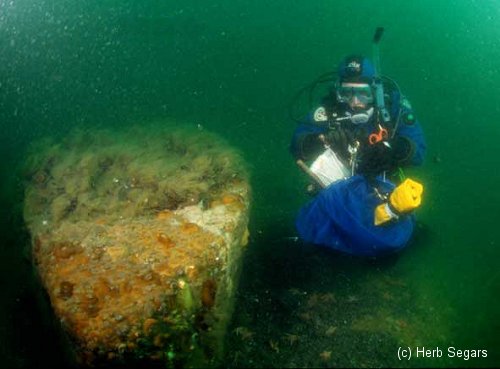Fisherman

- Type:
- artificial reef, tanker barge
- Specs:
- ( 242 x 42 ft )
- Sponsor:
- Spentonbush Red Star Company, Sportfish Fund
- Sunk:
- Thursday August 7, 1997 - Sea Girt Artificial Reef
- GPS:
- 40°07.930' -73°55.942'
- Depth:
- 70 ft


This very big barge was connected to the Rockland County by a heavy hawser or rope. This is the line that was used to moor her to the already-sunk Rockland County while she was prepared for sinking by the demolitions crew. The Fisherman barge is named for the Fisherman magazine, which sponsored her. It was donated to the reef program after the bow was damaged in a collision.
The Fisherman barge is flipped-over, and so presents a smooth upper surface, punctured in places by man-sized holes that probably allow access to the interior. The holes are either the result of the explosives used to sink the barge or were punched through by the large chunks of rock and concrete that were dropped on and around the wreck. The barge also stands slightly off the bottom, not enough to get under, but enough for some nice lobsters to make homes well out of reach.


Side-scan sonar image of the Fisherman barge, bow at lower-left, showing blast holes and concrete blocks all around and on the wreck. The side-scan didn't pick up the hawser. I'm sure by now it is gone.




Questions or Inquiries?
Just want to say Hello? Sign the .